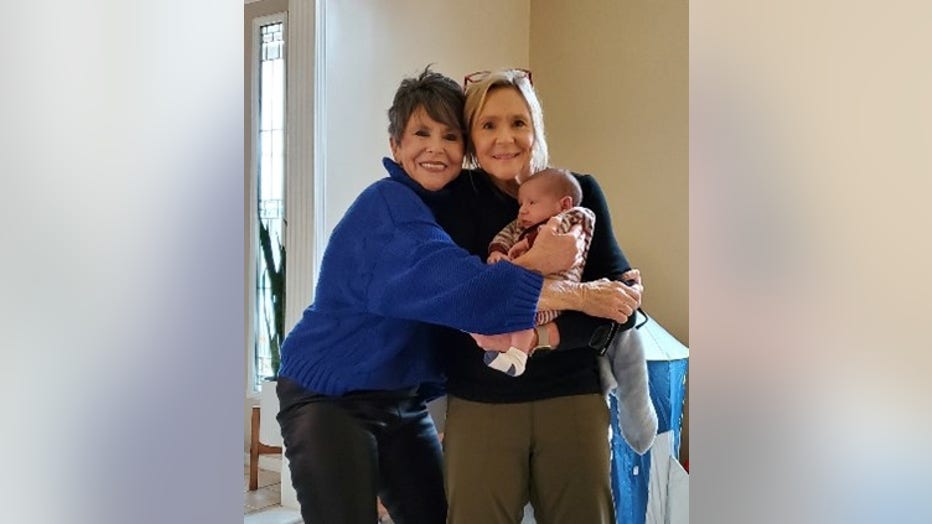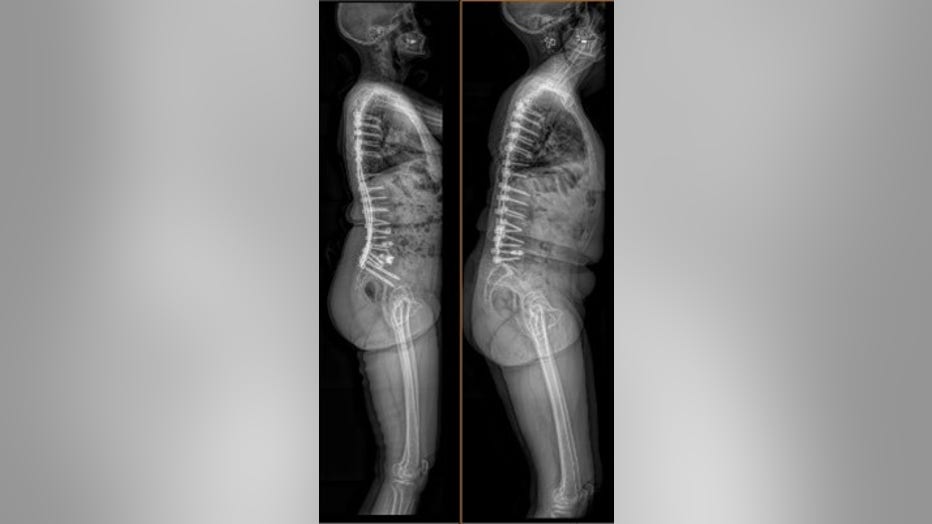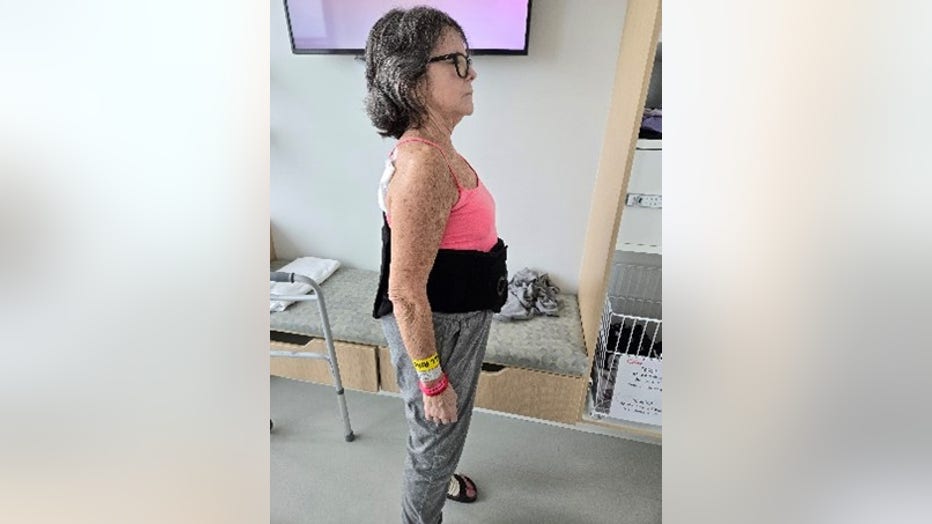New spine surgery technology frees Indiana woman from years of back pain

New spine surgery technology frees Indiana woman from years of back pain
After five years of debilitating pain and multiple failed surgeries, an Indiana woman finally found relief through a groundbreaking augmented reality spine procedure performed at Northwestern Medicine.
Back pain is the leading cause of disability in the United States. It’s an issue just about everyone will face at some point.
In the photo below you see Diana Little-Day hunched over while hugging her sister. But behind that smile is non-stop pain. For five years she was unable to stand up straight.

"I had five surgeries to try to correct that and none of them worked," Little-Day said. "I still was hunched over. I was in terrible pain. I didn't have a social life at all."
Little-Day was diagnosed with scoliosis as a child, but didn’t start having issues until she was much older. On the left side of this x-ray is how your back is supposed to look. On the right is what Diana’s back looked like.

There was little hope until Diana met Dr. Najib El Tecle from Northwestern Medicine. He talked to her about new technology that uses augmented reality in spine surgery. Diana was nervous about undergoing yet another surgery but was desperate to find something to ease the pain.
"He said he could make me 80% better," said Little-Day. "For someone in my condition, I thought, I’m ‘going for it.'"
The surgery was done in two parts over the course of two days, back in last April. Dr. El Tecle overdelivered on his prediction of making Diana 80% better. Below a picture of Diana the day after surgery. She was finally able to stand up straight and said El Tecle made her 100-percent better.

"Just seeing myself was incredible to see. Oh my gosh, I was standing up straight," said Little-Day. "It certainly does make me feel so much better. I'm a very loud over-the-top kind of outgoing person and the surgery really gave me my life back. It surely did. I always would have fun and laugh, and I just couldn't. I was in so much pain, 24 hours a day for five years."
Augmented reality goggles were used to prepare for Diana’s surgery. Computer-generated images allowed El Tecle to look at Diana’s spine before making an incision. Dr. El Tecle says this technology leads to better planning and a higher chance for positive outcomes post-surgery.
"The augmented reality component, that's just going to make it safer, more efficient, and faster" El Tecle said. "Hopefully, we work towards making these surgeries less invasive, safer for the patient, more precise, even easier for the surgeon."
Diana said before this surgery she could barely do things like going to get the mail. But now she’s walking 5 miles a day and is looking forward to getting a chance to start traveling again. She’s also pain-free and doesn’t have to take a single medication for her back.
"I cried probably for the first three months, just burst out crying because I was so happy and so grateful," Little-Day said. "It was such a happy cry that I couldn't believe that he did this for me. He truly is my hero. He gave me my life back. He really did."
The Source: The information in this story came from Diana Little-Day and Northwestern Medicine.

